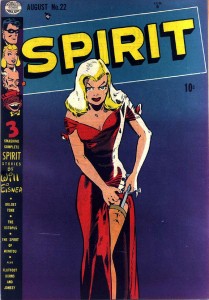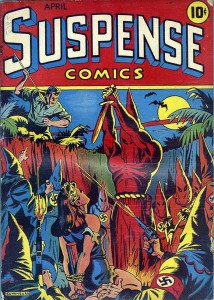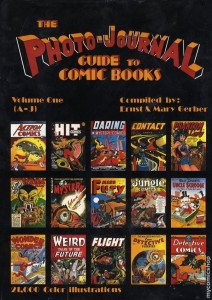
The recent Billy Wright comic book auction set all kinds of price records and for me it confirmed a trend I’ve seen developing over the last couple of years. It seems we’re in a comic book Golden Age revival. There’s no real way of telling exactly when this trend started but I’d guess it got a kick start a couple of years back when that first spat of comic books broke the $1 million dollar sales barrier.
ComicConnect sold the first of them, a CGC-certified 8.0 copy of Action Comics #1 (1st appearance Superman) on February 22, 2010, for $1 million. Three days later, Dallas-based Heritage Auctions sold a CGC-certified 8.0 copy of Detective Comics #27 (1st appearance Batman) for $1,075,500. ComicConnect reclaimed the top spot on March 30, 2010 with the sale of a CGC-certified 8.5 copy of Action Comics #1 for $1.5 million. Things only got better when on December 1st 2011 that CGC 9.0 copy of Action Comics #1 sold for $2.161 million. The latest and perhaps greatest statement of the Golden Age’s rise is the Billy Wright.
Every one of the aforementioned sales received substantial international press, front page news on websites, in newspapers, on radio and on TV; it was a well covered event. What these results did was raise awareness outside the traditional hobbyists and investors already knowledgeable in comics. If you weren’t listening when that first Action Comics #1 sold you were all ears by the time the Billy Wright collection hit.
It’s perfectly natural that trends like this start with the big key issues, these keys issues will command the headline prices but they’ll also spotlight the titles they’re in, the hero they introduced, the publisher that printed them, the genre they belong to and finally the era they came out of. There’s no era in comics as rewarding and diverse as the Golden Age.

The first and greatest wave of creativity in the comic book (not comic strip) medium began in the mid to late 1930s as publishers discovered the viability of actually creating original content for comic books. The financial viability of original content in comic books unleashed one of the greatest periods of creativity in American popular fiction and at the same time introduced new art forms and concepts. This was truly a Golden Age for American art in general and it is too bad that the whole medium was not taken seriously at the time. The comic book Golden Age legacy is all around us: it’s in the games we play, the pyjamas we sleep in, the t-shirts we wear, the movies we watch and indeed the graphic novels we read. The Golden Age of Comic books’ influence on American art and culture was substantial.
The Silver Age of comics has had quite the run and while some of the more marquee books will continue to perform well in value I’m expecting the natural and predictable increase in supply (meaning the population on the CGC census) to have a detrimental effect on values. The record prices that were attained when shortsighted investors and speculators saw the CGC census as static are a thing of the past.
Are Golden Age comics scarcer than Silver Age comics? For me a valid and quick litmus test would be to compare the graded quantities of key issues that a sensible person would find prudent to have graded. What I mean is that if I’m sitting on a complete run of Silver Age Flash I’d probably have the Flash #105 graded before any other and likewise if I was sitting on a Golden Age run of Wonder Woman I’d probably get the #1 graded before any other.
Looking at the census figures for key Golden Age compared to Key Silver Age it is quite clear that there are considerably less Golden Age books out there, graded at least. I will concede that perhaps an older generation of collectors who acquired their Golden Age through the 1960s into the early 1980s is a bit behind the grading curve but I’m assuming that many of these collectors have had at least their key issues graded.
While I expect the supply of graded Golden Age comics to grow as we see great results at auctions I do think the supply is truly limited when compared to the Silver Age, never mind the abundant Bronze Age.
This is where I warn the new investors in the Golden Age to take the CGC Census data with a grain of salt.
I’m going to generalize and say that collectors holding good runs of books have not graded them for the most part. While collectors may have sent their Pep Comics #22 in for grading they may not have sent the #26 in yet so its early days for Golden Age grading of run books.
In these early days the market will favor the seller. Sellers will have CGC graded 7.5s that are the highest or second highest graded and they will get record prices for some of the desirable Golden Age books.

So the CGC Census data is nowhere near reliable when trying to figure out true scarcity. What we need is some kind of bridge for this all important data gap. I’m recommending we all pick up Ernst and Mary Gerber’s Photo Journal Guides to Comic Books. These Gerber guides will be indispensable for anyone wanting to enter the Golden Age market. These Gerber Guides are huge (2 volumes for the Golden Age) and they are fun to look at but most importantly their Scarcity Index delivers some invaluable information.
The Gerber Scarcity Index (SI) goes from 1 (easy) to 11 (impossible) and I will not post the details here because I really want you to pick up these guides. I believe the original index info is based on late 1980s data (my copies were printed in 1989) so the information may not be as accurate as it was but generally speaking the ratings will be close to the mark. These Gerber Guides served the hard-core pre-CGC collecting community quite well and it’s time we rediscover these great resources.
Basically you should beware the Gerber SI 4 comic that has only say 5 graded copies on the CGC Census but move in with confidence on that Gerber SI 8 that has only 5 graded copies!
OK so we have our CGC Census, we have our Gerber, we have our GPAnalysis and we have a wad of cash burning a hole in our pocket (but not a big enough wad for Action #1, Pep #22 or Detective #27), where then do we put our money?
If I knew the answer to the above question I may not have shared it with you but I can tell you what I’d focus on;
- I’m a strong believer in continuity, characters like Captain America are better than Captain Aero and characters like Archie are better than Wilbur and Donald Duck is better than Super Duck etc – characters that are still relevant today and that look like they will continue to be relevant into the future are best.
- I prefer characters created in comic books to characters adapted to comic books for the obvious reasons (but the Disney characters will stay strong because of the strength of the Disney Corp’s commitment to these characters and to the reverence given to these characters by overseas investors) but still, in comics the Batman is better than the Shadow.
- 1st appearances of heroes and villains are always good, Detective Comics #58 (1st Penguin) is better than Detective Comics #57.
- It’s not all hero, Archie, Donald Duck, are good bets going forward, Casper is ok but I worry about the future relevance of the character, look for important issues though.
- WWII cover books are historic markers and should do well, especially with the mainline heroes, so something like Superman #17 is better than a Black Terror WWII cover issue.
- Pivotal points in comics are good too, 1st horror, romance etc, things that signified new directions that were successful. We must be careful with these though since their reverence stems from the early wave of collectors, the new wave of investors may not be as moved by the same things.
- More and more of the new money buying Golden Age comics will be coming from overseas, and they will be looking to connect with pieces that represent important moments in the American pop culture of the 20th century.
- The real gems will be those that went unnoticed in the first Golden Age rush decades ago, all you have to do is figure out which ones



Walt, why is the Billy Wright collection getting so much publicity as opposed to the 2 big finds from last year? Remember the Minneapolis bus driver:
http://www.startribune.com/local/minneapolis/120255039.html
1 mil is far less than 3.5 mil but it’s still nothing to sneeze at… Is it simply about the numbers?
Golden age books are nice to look at but I like silvers because that’s when the Marvel and DC universe was officially established… which was a prettying innovative concept at the time…
Golden age covers are wonderful and unfortunately the main focus for the artistic element of the comic. I have a good amount of golden age reprint material and in general it’s pretty tough to get through.
The Wright collection happened to be the latest and biggest but you are correct, there have been other great finds. I remember reading about that Minneapolis collection, great stuff.
This would apply to Scott’s comment below too, I’d say the Silver Age refined the concepts introduced in the Golden Age.
I think this trend is also down to growing frustration with the “Dark” Frank-Miller-inspired style of modern comics, which had its high point in Christopher Nolan’s last Batman movie, but has now reached a turning point. As Hollywood starts to darken everything in Batman’s wake (the new Spider-Man and Superman movies for example), so the style has become a cliché, and the colorful simplicity and naivity of the Golden Age era looks fresh again and interesting. Frank Miller’s comments on woolly liberals might be taken to mark the end of the ‘dark’ era. Now, several comics are reviving and rethinking Golden Age style (e.g. Bulletproof Coffin), kid’s cartoon comics are coming back, and I expect this trend will continue.
Do you think the retiring of baby boomers and the liquidation of estates (including their parents inherited estates) will have an impact on the market? Not necessarily flooding the market, just giving today’s collectors a chance to add these Golden Age books at reasonable prices.
Don’t know how many more of these early Golden Age finds are left. People buying these off the shelf would have been born in the 1920s.
It does seem that these collections are gobbled up as soon as they surface though, and at record prices each time.
I think as long as the increase in supply is sporadic as is it now then we’ll continue to see prices rise.
Great article, Walter!
Thanks RJ.
Very good commentary by all!Whenever i read and research a comic i place myself inside the mindset
and precise time of appearance of that particular
issue. This helps in determining a final value for
me at least.
What do you think the long term implications are for high grade comics (especially the rare Golden Age books) going overseas? Are they any less likely to resurface in the future? With the global internet market (and Im assuming global reach of the big auction houses) is there any impact to a book being sold to a collector in Japan vs one in the US?
I just see it as a broader borderless market. The upside is that there are more interested buyers. If the whole world takes posession of these American born properties then demand will increase.
Each culture I’m sure has their nostalgia and their cultural creations that have national demand like say the Canadians interested in Nelvana.
What makes characters like Superman, Donald Duck and Spider-Man different is that they have been adopted by the whole world. So these Japanese are not buying blind, they are not making a strategic purchase of a foreign collectible hoping that American interest will keep increasing. They are seeing Spider-Man as a borderless and timeless brand that has its origins in the American publication Amazing Fantasy #15. So I think perhaps these more important books will move around and resurface internationally similar to the way these things changed hands within North America a generation or two ago.